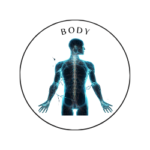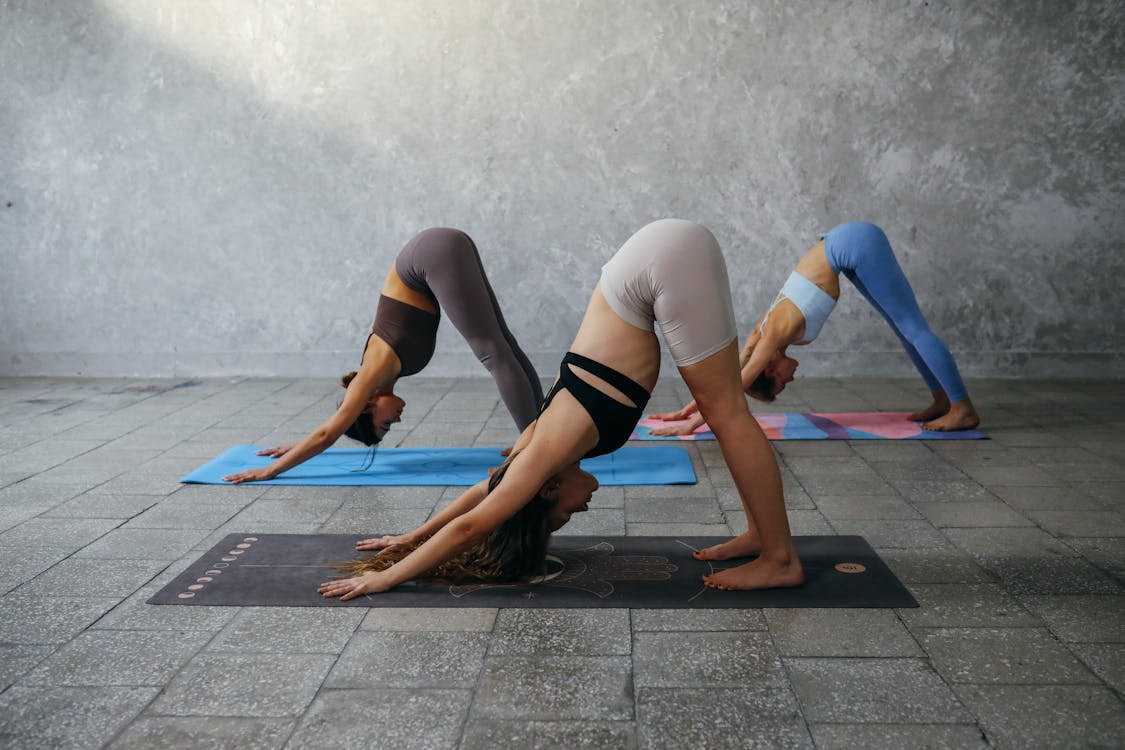 Mind
Mind
- Digital and Modern Well-being
- Mental Health and Emotional Well-being
- Mind-Body Connection and Holistic Health
- Parenting and Family
- Personal Growth and Development
- Relationships and Social Well-being
- Stress and Relaxation
- Therapeutic and Creative Practices
- Trauma and Recovery
- Work, Productivity, and Discipline
 Body
Body
 Fitness
Fitness
 Food
Food
 Beauty
Beauty
Flexibility vs. Mobility

Flexibility vs. Mobility: What’s the Difference?
Flexibility and mobility are often used interchangeably in fitness, but they refer to different, though related, aspects of physical movement. Both are essential for a balanced fitness routine, improved performance, and injury prevention, yet they serve distinct functions. Understanding the difference between flexibility and mobility—and how to improve both—can help you move more efficiently, reduce pain, and support overall physical health.
What Is Flexibility?
Flexibility is the ability of your muscles and connective tissues (like tendons and ligaments) to stretch temporarily. It reflects how far a muscle or muscle group can lengthen passively, such as when reaching to touch your toes or performing a seated hamstring stretch. Flexibility is essential for increasing the range of motion of a specific muscle or muscle group.
- Example: Being able to bend forward and touch your toes demonstrates flexibility in the hamstrings and lower back.
- Training for Flexibility: Typically involves static stretching (holding a stretch for 20–30 seconds) and other passive stretching techniques.
Flexibility is a foundational aspect of mobility because tight muscles can restrict movement. However, flexibility alone does not necessarily mean you can control your range of motion effectively, which is where mobility comes into play.
What Is Mobility?
Mobility is the ability of a joint to move actively through its full range of motion. Mobility requires flexibility, but it also involves strength, stability, and coordination to control movement. Mobility is more dynamic than flexibility and focuses on how well and easily you can move through a range of motion.
- Example: Performing a deep squat with good form requires hip, knee, and ankle mobility, not just the flexibility of the muscles in those areas.
- Training for Mobility: Typically involves dynamic stretches, joint-specific exercises, and functional movements that improve strength and control in a given range of motion.
Good mobility allows you to perform exercises and daily movements with proper form, reducing the risk of injury and enhancing functional movement.
Key Differences Between Flexibility and Mobility
| Aspect | Flexibility | Mobility |
|---|---|---|
| Definition | The ability of muscles to lengthen passively. | The ability of joints to move actively through a range of motion. |
| Components | Muscle length and elasticity | Flexibility, joint stability, strength, coordination |
| Goal | Increases range of motion in specific muscles | Improves movement efficiency and control |
| Examples | Static hamstring stretch, seated forward fold | Deep squat, controlled shoulder rotation |
| Training | Static stretching, passive stretching | Dynamic stretching, joint-specific exercises, strength exercises |
Benefits of Flexibility
- Increased Range of Motion: Flexibility exercises improve the range of motion of muscles, which can enhance performance and reduce tightness.
- Improved Muscle Relaxation: Static stretching helps relax muscles after a workout, aiding in recovery and reducing post-exercise stiffness.
- Decreased Injury Risk: Flexible muscles are less likely to become strained or injured during physical activities.
- Better Posture: Flexibility in key areas like the hips and shoulders can reduce imbalances, promoting better posture.
Benefits of Mobility
- Enhanced Functional Movement: Mobility training improves your ability to move joints through their full range of motion, making everyday tasks easier and safer.
- Improved Athletic Performance: Mobility is essential for sports and activities that require dynamic movements, such as squatting, jumping, or sprinting.
- Injury Prevention: With better mobility, joints are more stable and less prone to strain, reducing the risk of injury during exercise or daily movements.
- Greater Strength and Control: Mobility exercises increase strength and control within a range of motion, leading to more effective and efficient movements.
How Flexibility and Mobility Work Together
While flexibility and mobility are distinct, they’re interconnected and support each other. Flexibility allows muscles to lengthen, which is a component of mobility. However, mobility also requires strength and coordination to control movements. For example, achieving a deep squat requires flexible hips, quads, and hamstrings (flexibility), as well as strong glutes, core, and leg muscles to control the squat motion and maintain stability (mobility).
In practical terms:
- Flexibility is necessary to reach certain positions.
- Mobility is necessary to perform movements efficiently within those positions.
If you’re flexible but lack mobility, you might be able to reach a position passively, but you won’t necessarily be able to maintain or control it. Conversely, if you have good mobility but limited flexibility, certain movements may feel restricted due to tight muscles.
How to Improve Flexibility and Mobility
Improving Flexibility
- Static Stretching: Hold a stretch for 20–30 seconds, focusing on a specific muscle group. Examples include hamstring stretches, quad stretches, and shoulder stretches.
- PNF Stretching (Proprioceptive Neuromuscular Facilitation): This technique involves stretching a muscle, contracting it against resistance, and then stretching it further. It’s highly effective for increasing flexibility.
- Passive Stretching: Use props like straps or a wall to hold a stretch passively, allowing your body to relax into the stretch.
Improving Mobility
- Dynamic Stretching: Involves moving joints through a range of motion, such as arm circles or leg swings, to increase joint flexibility and control.
- Joint-Specific Exercises: Include exercises that target specific joints, like shoulder rotations, hip circles, and ankle rolls, to enhance range of motion.
- Strength Training with Full Range of Motion: Perform exercises like deep squats, lunges, and overhead presses to build strength and control within your joint’s range of motion.
- Foam Rolling and Soft Tissue Work: Foam rolling or using massage tools can release tight muscles and fascia, improving flexibility and mobility in the affected area.
When to Focus on Flexibility vs. Mobility
- Flexibility: Useful for activities that require a high degree of muscle length, such as gymnastics, dance, and yoga. It’s also beneficial for anyone who feels tightness in certain areas (like the hamstrings or shoulders) or struggles with postural issues.
- Mobility: Essential for functional fitness, athletic performance, and exercises that involve multiple joints (like squats, lunges, or deadlifts). Mobility training should be a priority for athletes, fitness enthusiasts, and anyone seeking to improve movement efficiency.
Most people benefit from a combination of flexibility and mobility work. For example, you may start a workout with mobility drills (like dynamic stretching or joint-specific exercises) to prepare for movement and end with flexibility exercises (like static stretching) to relax muscles after training.
Sample Flexibility and Mobility Routine
Here’s a simple routine combining flexibility and mobility exercises.
Warm-Up (5 minutes): Start with light cardio (e.g., jogging, jumping jacks) to increase blood flow.
Dynamic Stretching for Mobility:
- Leg Swings (10–15 per leg): Improves hip and hamstring mobility.
- Arm Circles (10–15 per arm): Warms up the shoulders.
- Hip Circles (10 each direction): Enhances hip range of motion.
Joint-Specific Mobility Drills:
- Cat-Cow Stretch (10 reps): Improves spine mobility.
- Deep Squat Hold with Rocking (30 seconds): Builds hip, knee, and ankle mobility.
- Shoulder Dislocates with Band (10 reps): Increases shoulder mobility.
Static Stretching for Flexibility:
- Hamstring Stretch (30 seconds per leg): Targets hamstrings.
- Quadriceps Stretch (30 seconds per leg): Stretches the front of the thigh.
- Chest Stretch (30 seconds): Opens up the chest and shoulders.
Cool Down: Finish with deep breathing exercises to relax the body.
Conclusion
Both flexibility and mobility play important roles in physical health and performance. Flexibility refers to the ability of muscles to lengthen, while mobility involves the ability to move joints through a controlled range of motion. Improving both aspects leads to better movement efficiency, injury prevention, and overall fitness. By incorporating flexibility and mobility exercises into your routine, you can build a well-rounded foundation that supports everything from everyday activities to advanced athletic performance.
